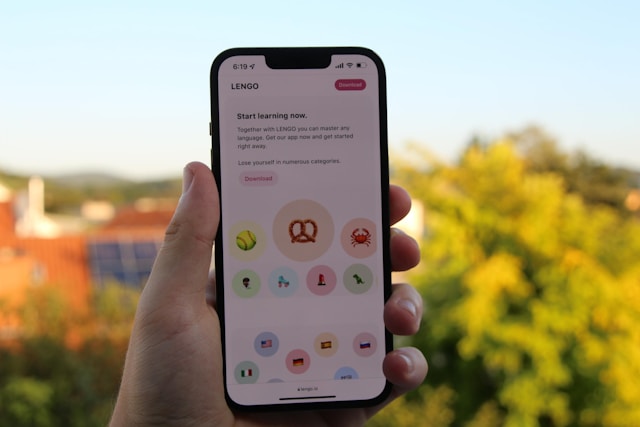Rapid Translate Team
In our ever-increasingly globalized world, communication between people of different languages is often necessary. Cross-communication is crucial whether you’re doing business with someone who speaks a foreign language or traveling abroad. That is where a realtime translation comes in handy.
Realtime language translation involves using technology to instantly translate text or speech from one language to another. It allows people to converse in different languages with minimal delays. These tools have gotten more popular, helping millions worldwide.
Read on to learn everything you need to know about getting realtime translation.

Table of Contents
What Is a Realtime Translator?
A realtime translator is a tool that interprets written or spoken content from one language to another. As its name suggests, this tool performs these translation tasks in real time. So, it allows people to generate instant results.
When working with speech, these realtime translators interpret content as soon as a person creates them. These tools process waveforms in speech in the source language to create translations in the target language.
The translation of text in real time also works similarly. But this time, the translators read text forms, creating their language dubs immediately before passing them on. As a result, it can conveniently facilitate realtime conversations. These translators are useful for aiding phone conversations and text chats between people who speak different languages. These translators are quite complex since they translate language real time. Therefore, so much energy has gone into their refinement and evolution over time.

How Realtime Translation Works
Translation technology has greatly evolved. The oldest versions of this technology helped to transcribe text into speech. From there, professionals could swoop in, creating different language versions of the content.
However, the emergence of artificial intelligence (AI) and advanced technological innovations has proved to be a game changer. Translators no longer have to transcribe and interpret speech to get their target language versions.
Modern realtime translation tools use natural language processing techniques to translate speech more accurately and quickly. These tools identify distinctive sounds of words, phrases, and sentences, determining the source language.
After that, it generates the meaning and allows you to translate it into dozens of languages.
Systems for realtime language translations combine machine learning with artificial intelligence capabilities. Besides matching patterns to identify sounds and languages, it analyzes documents in different languages.
Modern instant translation technology provides results with up to 85% accuracy in a few seconds. These technologies mostly get their data from the internet. So, there is usually a minor delay from the input to the output.
Although their accuracy levels are still not up to par, they can foster reliable communication to a great degree. This industry appears to be gearing up, so improvements are coming in by the day.

4 Benefits of Realtime Translation
People often wonder how realtime translation is beneficial to those in different industries. However, this technology has a massive applicability and is extremely helpful in multiple cases. While there are still some limitations to its usage, let’s discuss four benefits of instant translation.
1. Increased Translation Speed
The speed of manual translation has always been a problem, especially when instant results are necessary. Luckily, realtime translation offers a massively increased speed for its translations. You can get an almost instant result when you register your input.
Some instant translation technology now translates text or speech within two to five seconds. This is quite impressive and provides a valid solution to your instant translation needs.
2. It’s a More Affordable Option
Hiring professional translators for major projects could cost you quite a lot. But you can get realtime solutions from instant translation technology without breaking the bank. As a result, translation services have become more accessible and affordable.
Besides, hiring professional translators for this kind of task can be expensive. Ultimately, you may not even achieve your target speed and precision.

3. Rapid Improvements Through AI and Machine Learning
Instant translation uses artificial intelligence and machine learning to optimize results in speed and accuracy. These algorithms constantly learn and use more data to improve results and translation capabilities.
As a result, realtime translators learn from big data, creating more refined and accurate translations. Machine learning is useful in this apparatus because it ensures that the next task returns better than the previous.
4. Creates Meaning and Not Word-for-Word Translations
Most realtime language translation technologies don’t offer literal interpretations. These translators provide translations that are usually accurate and contextually correct. They achieve this by considering idiomatic expressions, context, and cultural elements.
3 Limitations of Realtime Translation
Undoubtedly, there have been massive improvements in realtime language translation capabilities. However, there are still some limitations to their functioning. While this technology has offered solutions to major language barriers, it has three limitations.
1. It Doesn’t Give That Human Translation Touch
While this type of translation has greatly improved recently, it still does not provide the human touch. This does not mean that the results it creates are inaccurate. Instead, the nature of human languages, in general, has made it tricky to cover all its elements in the technology.
Of course, many improvements have characterized this tech. However, many social, historical, and economic factors influence language. So, regarding translation, nothing can beat that human touch yet.
2. It Isn’t Always 100% Accurate
Accuracy is another factor that limits realtime language translation. The inability of these translators to combine contextual information with current events makes it hard to replicate human-level results.
Modern translation technology has achieved some high levels of accuracy, and improvements are underway. However, these problems are still evident.
Besides that, realtime language translators don’t always yield results when working with highly technical language.
3. Translation Services Offer a Limited Number of Languages
Most realtime translators are still in their developmental phases. So, the number of languages they support is still limited. This is one of their major limitations since several important languages are still not in consideration.
Even within supported languages, these technologies may favor some speech patterns or accents over others. Of course, different apps and translators cover dozens of languages. Nonetheless, efforts are underway to expand these language capabilities.

Realtime Translation App: Choose the Best For the Best
Are you looking for a realtime translation app to help with your tasks? You can use several translation app options to interpret your text and speech. While they function differently and offer different pros and cons, you can always find one that aligns with your needs.
Google Translate is one of the most popular translation apps for your realtime needs. Besides supporting over a hundred languages, it supports speech and text translation. Google Translate also supports the interpretation of realtime conversations.
The Microsoft Translator, another major player in the industry, supports over 60 languages. While it’s quite similar to Google Translate, it supports offline translation. It also works with documents and images.
Trulinco Translator offers translations in over 200 languages. This mobile app supports text and speech translation and instant conversation translation. This translator also supports image and document translation. It’s useful for travel, business, personal, and educational purposes.
iTranslate is another app that offers realtime language translation. It works on MacOS and iOS devices. It covers over a hundred languages and provides text and speech translation capabilities. Several options are available, but your choice depends on your use case.
Besides enjoying realtime translation, other translation needs may also arise. For instance, you may need an official or a notarized translation of your documents. In such cases, Rapid Translate’s services come in handy.
Rapid Translate helps upgrade your global communication capabilities. Whether expanding your business or studying abroad, you’ll find it useful. Use this effective translation to overcome language barriers. Order now to enjoy unlimited communication!




